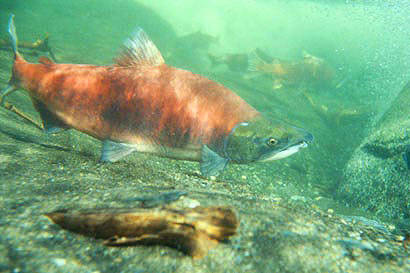The Alaska Department of Fish and Game announced Thursday that the forecast for sockeye runs will be less than average in the Kenai and Kasilof Rivers.
According to the ADFG’s analysis, about 2.3 million sockeye are predicted to make their way through the Kenai River. This is 36% less than the 20-year average run of about 3.6 million. Opening day is the third Monday in June or June 19, whichever comes last.
Still, the ADFG reports it would “be approximately 50% greater than the 2020 preliminary total run estimate of 12,216 large fish.”
Optimum escapement goals are set by the Board of Fisheries, according to the ADFG. They calculate the amount of salmon to preserve each season based on the biological needs of the particular stock of salmon.
Biological escapement goals describe the number of salmon in a stock that the ADFG deems is necessary to escape and repopulate for the following fishing season.
Sustainable escapement goals are based on historical data in order to conserve salmon runs for future years. They are set by the ADFG.
The OEG for late-run king salmon in the Kenai River this summer is 15,000 to 30,000 large fish.
Forrest Bowers, the deputy director of the ADFG Division of Commercial Fisheries, said meeting the majority of the state’s escapement goals is important so as to “consistently produce large yields over the long term.”
But if a goal isn’t met, Bowers said it likely isn’t dire. “Department goals are management targets, not necessarily conservation benchmarks,” he said.
According to Bowers, about 80% of escapement goals over around 250 different stocks were met across the state last year.
In the Kasilof River, 881,000 sockeye are expected to run, which is 12% less than the 20-year average of 986,000 salmon. The OEG is 140,000 to 370,000 sockeye salmon.
The ADFG can make adjustments depending on the stock levels of sockeye, Bowers said. If there is an abundance of salmon, the department may increase the time allotment for commercial and sport fishing. If there are fewer sockeye in the run, ADFG may impose restrictions such as prohibiting the use of bait, only allowing catch and release, regulating by fish size, or closing the river altogether.
More announcements from the ADFG will come as the season nears.
Reach reporter Camille Botello at camille.botello@peninsulaclarion.com.

